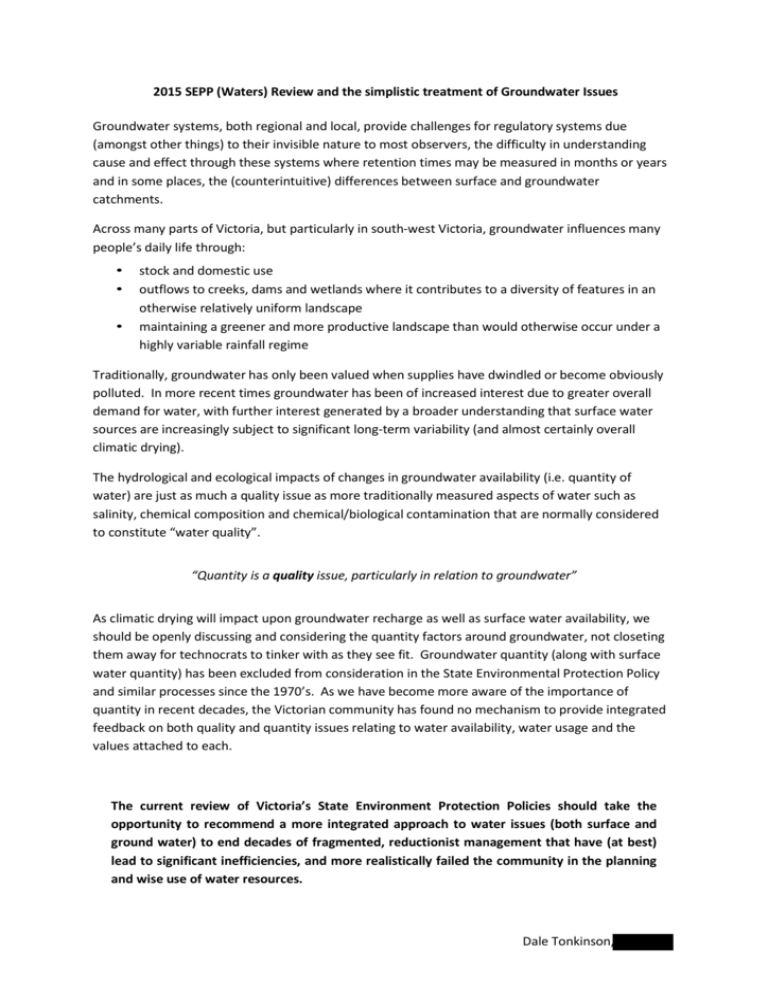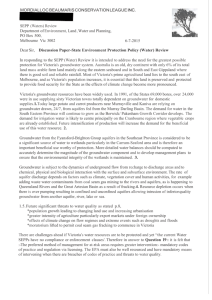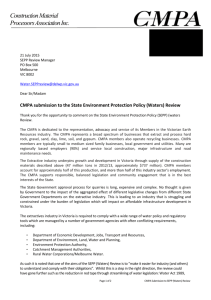D Tonkinson (Accessible version) [MS Word Document
advertisement

2015 SEPP (Waters) Review and the simplistic treatment of Groundwater Issues Groundwater systems, both regional and local, provide challenges for regulatory systems due (amongst other things) to their invisible nature to most observers, the difficulty in understanding cause and effect through these systems where retention times may be measured in months or years and in some places, the (counterintuitive) differences between surface and groundwater catchments. Across many parts of Victoria, but particularly in south-west Victoria, groundwater influences many people’s daily life through: • • • stock and domestic use outflows to creeks, dams and wetlands where it contributes to a diversity of features in an otherwise relatively uniform landscape maintaining a greener and more productive landscape than would otherwise occur under a highly variable rainfall regime Traditionally, groundwater has only been valued when supplies have dwindled or become obviously polluted. In more recent times groundwater has been of increased interest due to greater overall demand for water, with further interest generated by a broader understanding that surface water sources are increasingly subject to significant long-term variability (and almost certainly overall climatic drying). The hydrological and ecological impacts of changes in groundwater availability (i.e. quantity of water) are just as much a quality issue as more traditionally measured aspects of water such as salinity, chemical composition and chemical/biological contamination that are normally considered to constitute “water quality”. “Quantity is a quality issue, particularly in relation to groundwater” As climatic drying will impact upon groundwater recharge as well as surface water availability, we should be openly discussing and considering the quantity factors around groundwater, not closeting them away for technocrats to tinker with as they see fit. Groundwater quantity (along with surface water quantity) has been excluded from consideration in the State Environmental Protection Policy and similar processes since the 1970’s. As we have become more aware of the importance of quantity in recent decades, the Victorian community has found no mechanism to provide integrated feedback on both quality and quantity issues relating to water availability, water usage and the values attached to each. The current review of Victoria’s State Environment Protection Policies should take the opportunity to recommend a more integrated approach to water issues (both surface and ground water) to end decades of fragmented, reductionist management that have (at best) lead to significant inefficiencies, and more realistically failed the community in the planning and wise use of water resources. Dale Tonkinson,









